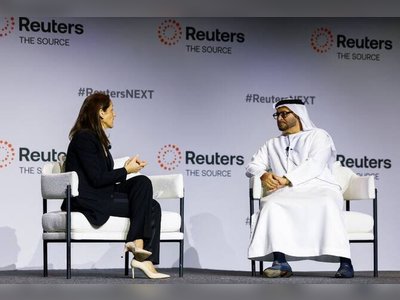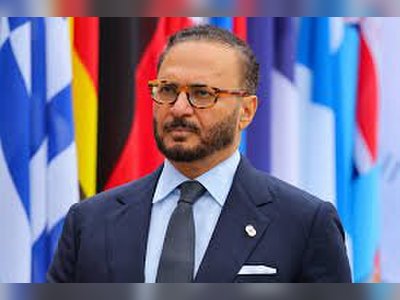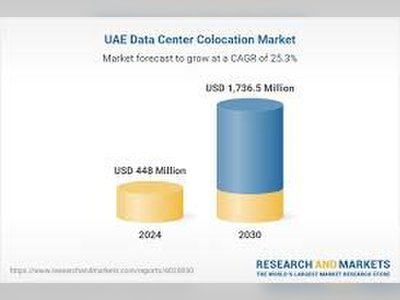
Dubai's Road Infrastructure Development to Reduce Travel Times and Enhance Mobility
Major strategic road projects and autonomous taxi initiatives planned to boost traffic efficiency by 2027.
Sheikh Hamdan bin Mohammed bin Rashid Al Maktoum, the Crown Prince of Dubai, has reviewed significant advancements in strategic road infrastructure being executed by the Roads and Transport Authority (RTA) in a bid to improve traffic flow across the emirate.
During a recent briefing, he was updated on critical projects set for completion by 2027, aimed at accommodating a population projected to reach 8 million by 2040.
The RTA's 2025–2027 plan encompasses 57 initiatives, including the construction of 226 kilometers of roads and 115 bridges and tunnels.
Plans detail the development of 11 major road corridors across Dubai, which include eight vertical corridors and three new routes, designed to enhance overall mobility.
Key projects highlighted include the upgrade of the Umm Suqeim–Al Qudra Corridor, which spans 16 kilometers from Jumeirah Street to Emirates Road, facilitating access for over one million residents.
This project will see travel time reduced from 46 minutes to 11, thanks to the enhancement of four key junctions and the construction of bridges and tunnels totaling 7,000 meters.
Phase one of this project is currently 50% complete.
Hessa Street is also undergoing significant upgrades, with the project approximately 60% finished.
Enhancements include the construction of various intersections and a total of 9,000 meters of bridges, which will expand the road's capacity from 4,000 to 8,000 vehicles per hour, cutting travel time from 30 minutes to just seven minutes.
A newly planned 13.5-kilometer cycling and e-scooter track will also facilitate active transportation along this route.
The Al Fay Street Corridor, extending from Sheikh Mohammed bin Zayed Road to Emirates Road, will involve the construction of 12,900 meters of roadway and five major intersections with 13,500 meters of bridges, raising traffic capacity for 64,400 vehicles per hour and benefitting an estimated 600,000 residents.
In terms of quick traffic solutions, the RTA has implemented seven initiatives from January to April 2025 that collectively reduced congestion by 5 to 10%.
This included a dynamic road toll policy, which led to a 9% reduction in traffic volumes and a 4% increase in public transport ridership.
The RTA has also integrated smart technologies in its monitoring processes, employing drones and artificial intelligence to enhance project oversight and efficiency.
These technologies have led to an increase in operational efficiency and have cut down field survey times by 60%.
As part of its holistic transport strategy, Dubai boasts 557 kilometers of dedicated cycling routes, with ongoing construction of an additional 100 kilometers and plans for another 185 kilometers in the coming years.
In 2024, there were 47 million cycling trips recorded in the emirate.
Initiatives to introduce autonomous taxis are also in progress, with agreements signed with international companies specializing in this technology.
The rollout will begin in 2026 with over 60 vehicles used for road mapping and data collection, advancing Dubai’s Self-Driving Transport Strategy, which plans to convert 25% of mobility journeys to autonomous formats by 2030.
Furthermore, the Model District Project in Al Barsha 2 is set to enhance urban livability by expanding green spaces and improving pedestrian infrastructure, aligning with the Dubai 2040 Urban Master Plan.
The project aims to provide essential services within a 20-minute walk or bike ride, promoting a sustainable lifestyle.
This initiative will feature 17 kilometers of integrated walking and cycling paths connecting various key areas in Dubai and includes the establishment of community spaces, upgraded public amenities, and substantial landscaping efforts.
During a recent briefing, he was updated on critical projects set for completion by 2027, aimed at accommodating a population projected to reach 8 million by 2040.
The RTA's 2025–2027 plan encompasses 57 initiatives, including the construction of 226 kilometers of roads and 115 bridges and tunnels.
Plans detail the development of 11 major road corridors across Dubai, which include eight vertical corridors and three new routes, designed to enhance overall mobility.
Key projects highlighted include the upgrade of the Umm Suqeim–Al Qudra Corridor, which spans 16 kilometers from Jumeirah Street to Emirates Road, facilitating access for over one million residents.
This project will see travel time reduced from 46 minutes to 11, thanks to the enhancement of four key junctions and the construction of bridges and tunnels totaling 7,000 meters.
Phase one of this project is currently 50% complete.
Hessa Street is also undergoing significant upgrades, with the project approximately 60% finished.
Enhancements include the construction of various intersections and a total of 9,000 meters of bridges, which will expand the road's capacity from 4,000 to 8,000 vehicles per hour, cutting travel time from 30 minutes to just seven minutes.
A newly planned 13.5-kilometer cycling and e-scooter track will also facilitate active transportation along this route.
The Al Fay Street Corridor, extending from Sheikh Mohammed bin Zayed Road to Emirates Road, will involve the construction of 12,900 meters of roadway and five major intersections with 13,500 meters of bridges, raising traffic capacity for 64,400 vehicles per hour and benefitting an estimated 600,000 residents.
In terms of quick traffic solutions, the RTA has implemented seven initiatives from January to April 2025 that collectively reduced congestion by 5 to 10%.
This included a dynamic road toll policy, which led to a 9% reduction in traffic volumes and a 4% increase in public transport ridership.
The RTA has also integrated smart technologies in its monitoring processes, employing drones and artificial intelligence to enhance project oversight and efficiency.
These technologies have led to an increase in operational efficiency and have cut down field survey times by 60%.
As part of its holistic transport strategy, Dubai boasts 557 kilometers of dedicated cycling routes, with ongoing construction of an additional 100 kilometers and plans for another 185 kilometers in the coming years.
In 2024, there were 47 million cycling trips recorded in the emirate.
Initiatives to introduce autonomous taxis are also in progress, with agreements signed with international companies specializing in this technology.
The rollout will begin in 2026 with over 60 vehicles used for road mapping and data collection, advancing Dubai’s Self-Driving Transport Strategy, which plans to convert 25% of mobility journeys to autonomous formats by 2030.
Furthermore, the Model District Project in Al Barsha 2 is set to enhance urban livability by expanding green spaces and improving pedestrian infrastructure, aligning with the Dubai 2040 Urban Master Plan.
The project aims to provide essential services within a 20-minute walk or bike ride, promoting a sustainable lifestyle.
This initiative will feature 17 kilometers of integrated walking and cycling paths connecting various key areas in Dubai and includes the establishment of community spaces, upgraded public amenities, and substantial landscaping efforts.
Translation:
Translated by AI











